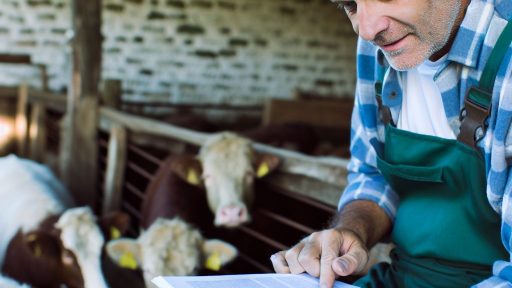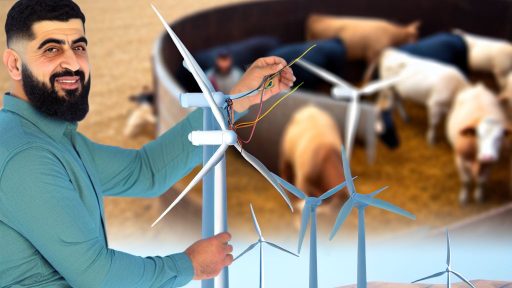Introduction to Sustainable Livestock Production and its Importance for Climate Resilience
Sustainable livestock production is essential for modern agriculture.
It plays a vital role in increasing climate resilience.
Several factors contribute to this significance.
Enhancing Soil Health
Sustainable practices improve soil health significantly.
Healthy soil promotes robust grasslands and grazing lands.
This leads to better nutrition for livestock.
Reducing Greenhouse Gas Emissions
Conventional livestock farming generates substantial greenhouse gases.
Sustainable methods focus on lowering these emissions.
Techniques such as rotational grazing effectively mitigate methane production.
Promoting Biodiversity
Maintaining biodiversity is crucial for ecological balance.
Sustainable livestock production encourages diverse ecosystems.
This includes promoting various plant species that support animal health.
Community and Economic Resilience
Sustainable practices strengthen local economies.
They create jobs while ensuring food security.
By supporting local farmers, communities thrive.
Transform Your Agribusiness
Unlock your farm's potential with expert advice tailored to your needs. Get actionable steps that drive real results.
Get StartedLong-Term Sustainability
These methods provide long-term viability for agriculture.
Farmers focused on sustainability cultivate a resilient food system.
Moreover, they adapt to changing environmental conditions effectively.
Overview of Common Sustainable Livestock Methods
Agroecology
Agroecology integrates ecological principles into livestock production.
This method enhances biodiversity on farms.
It promotes natural pest control, reducing the need for chemicals.
Additionally, agroecology focuses on soil health and fertility.
Farmers utilize cover crops and crop rotation techniques.
These practices help improve nutrient cycling and soil structure.
Pasture-Based Systems
Pasture-based systems prioritize livestock grazing on natural grasslands.
This approach significantly enhances animal welfare.
Animals roam and forage, leading to healthier livestock.
Moreover, pasture-based systems enhance soil carbon sequestration.
This method decreases greenhouse gas emissions compared to conventional systems.
Integrated Crop-Livestock Systems
Integrated crop-livestock systems combine crop production with livestock rearing.
This synergy improves resource use efficiency on farms.
Livestock manure serves as an organic fertilizer for crops.
It enriches soil nutrients, leading to better yields.
Furthermore, these systems help diversify farm income.
Silvopasture
Silvopasture involves integrating trees, pasture, and livestock.
This practice improves biodiversity and ecosystem services.
It provides shade for animals during hot weather.
Moreover, it can enhance carbon storage in agroforestry systems.
Farmers benefit from the additional income from timber production.
Showcase Your Farming Business
Publish your professional farming services profile on our blog for a one-time fee of $200 and reach a dedicated audience of farmers and agribusiness owners.
Publish Your ProfileRotational Grazing
Rotational grazing encourages rotation of livestock between pastures.
This practice prevents overgrazing and promotes regrowth of grasses.
It leads to healthier pastures and increased forage availability.
Consequently, rotational grazing supports sustainable herd management.
Farmers often observe improved soil structure and fertility.
Skills and Knowledge Transfer
Farmers must acquire new skills for effective sustainable practices.
Extension programs and workshops can provide crucial training.
Networking among farmers fosters knowledge sharing.
This collaboration enhances collective learning opportunities.
Access to research on best practices significantly benefits adoption.
The Role of Animal Breeding and Genetic Diversity in Enhancing Resilience
Understanding Genetic Diversity
Genetic diversity is crucial for healthy livestock populations.
It enhances the ability of animals to adapt to changing environments.
This diversity helps resist diseases and environmental stresses.
Moreover, it supports better overall productivity in livestock systems.
The Importance of Selective Breeding
Selective breeding focuses on enhancing desirable traits in animals.
These traits include disease resistance, growth rates, and reproductive efficiency.
For instance, farmers can breed cattle that thrive in warmer climates.
As a result, they can maintain high productivity despite climate stressors.
Strategies for Maintaining Genetic Diversity
- Utilize crossbreeding techniques to combine different traits.
- Implement rotational grazing systems to enhance natural selection.
- Participate in genetic preservation programs for rare breeds.
- Encourage farmers to share breeding stock to reduce genetic bottlenecks.
Case Studies in Successful Breeding Programs
The program at Green Pastures Farm demonstrates effective breed management.
They focus on maintaining a diverse genetic pool among their sheep.
This strategy has improved lamb survival rates and overall flock health.
Additionally, the breed improvement initiative in South America highlights resilience.
It features cattle that survive well in arid conditions, showcasing essential adaptation.
Future Directions in Animal Breeding
Technology plays a significant role in modern breeding practices.
Genomic selection allows for targeted improvements in livestock.
Through data analysis, farmers can make informed breeding decisions.
Furthermore, integrating local genetic resources can enhance adaptability.
This approach respects regional biodiversity while maximizing production efficiency.
You Might Also Like: Sustainable Farm Certification for Organic Crop and Livestock Production
Integrating Crop-Livestock Systems
Benefits of Integration
Integrating crop and livestock systems enhances overall productivity.
This synergy creates a more resilient farming system.
Mixed farming improves soil health and nutrient cycling.
Livestock can graze on crop residues, reducing waste.
Additionally, this method lowers reliance on synthetic fertilizers.
Moreover, it aids in pest management through natural predator-prey interactions.
Best Practices for Integrated Systems
Implement rotational grazing to optimize pasture use.
This technique prevents overgrazing and promotes forage regrowth.
Consider intercropping crops with forage species.
This approach increases diversity and reduces crop failure risks.
Utilize cover crops to enhance soil structure and fertility.
Showcase Your Farming Business
Publish your professional farming services profile on our blog for a one-time fee of $200 and reach a dedicated audience of farmers and agribusiness owners.
Publish Your ProfileOrganic compost from livestock can enrich soil nutrient content.
Challenges to Overcome
Transitioning to an integrated system may present initial costs.
Training farmers in mixed farming techniques improves success rates.
Data collection on system performance allows for informed decisions.
Furthermore, building local markets for diverse products can enhance profitability.
Examples of Successful Integration
Many farms around the world practice integrated systems effectively.
For instance, the Garcia family farm combines cattle with corn and soy.
This method maximizes land use and improves financial viability.
In Australia, mixed grazing of sheep and crops increases biodiversity.
These real-world examples showcase the transformative potential of integration.
Uncover the Details: Sustainable Farm Certification for Regenerative and Carbon Farming
Water Resource Management in Sustainable Livestock Production
The Importance of Water in Livestock Farming
Water is a critical resource for livestock production systems.
Animals require adequate water for health and productivity.
Moreover, clean water minimizes disease transmission among livestock.
Therefore, efficient water management is essential for sustainable farming.
Water Conservation Techniques
Implementing water conservation techniques enhances sustainability.
Farmers can use rainwater harvesting systems effectively.
This method captures rainwater for future use in livestock operations.
Additionally, installing drip irrigation helps reduce water wastage.
It delivers water directly to the roots of forage crops.
Water Recycling Practices
Recycling water supports sustainability in livestock production.
Farmers can treat and reuse wastewater from livestock operations.
This practice reduces the demand for fresh water sources.
Furthermore, it minimizes environmental pollution from runoff.
Monitoring Water Quality
Regular monitoring of water quality is vital for livestock health.
Farmers should test water sources routinely for contaminants.
Testing helps ensure that livestock consume safe water.
Moreover, maintaining proper pH levels supports animal growth.
Community-Based Water Management
Engaging local communities enhances water resource management strategies.
Farmers can collaborate on shared water sources and usage plans.
This cooperation fosters a sustainable approach to water management.
Furthermore, it builds resilience against climate variability.
Education and Training Programs
Education is crucial for effective water resource management.
Farmers must receive training on efficient water use practices.
Workshops can teach techniques for implementing conservation strategies.
Informed farmers make better decisions regarding water management.
Explore Further: Organic Poultry Farming for Sustainable and Ethical Egg Production
Feeding Strategies: Importance of Forage Quality and Nutrient Management
Forage Quality Matters
High-quality forage supports livestock health and productivity.
It enhances digestion and nutrient absorption in animals.
Moreover, quality forage reduces feed costs in the long run.
Showcase Your Farming Business
Publish your professional farming services profile on our blog for a one-time fee of $200 and reach a dedicated audience of farmers and agribusiness owners.
Publish Your ProfileFarmers should prioritize diverse forage species for balanced nutrition.
Nutrient Management Strategies
Effective nutrient management maximizes livestock performance.
Start by testing soil and forage for nutrient levels.
Utilize the results to tailor feeding programs for livestock.
Incorporating cover crops can enhance soil fertility.
Regularly update nutrient management plans to adapt to changes.
Minimizing Environmental Impact
Proper feeding strategies align with sustainable practices.
Optimized nutrient use mitigates greenhouse gas emissions.
Additionally, it prevents nutrient runoff into water bodies.
Livestock producers can adopt rotational grazing to enhance soil health.
Innovative Feeding Techniques
Innovative approaches can further improve forage utilization.
Implementing precision feeding technologies enhances nutrient delivery.
Furthermore, using alternative feeds can reduce reliance on conventional grains.
Collaboration with local research institutions can introduce new practices.
Learn More: Sustainable Farm Certification for Small-Scale and Family-Owned Farms

Waste Management Techniques: Composting and Nutrient Recycling in Livestock Systems
Importance of Waste Management
Effective waste management enhances sustainability in livestock farming.
It reduces environmental impact by minimizing pollution.
Proper techniques also promote soil health and fertility.
Composting Practices
Composting converts organic waste into valuable fertilizers.
This process improves nutrient cycling on the farm.
Farmers should consider mixing manure with carbon-rich materials.
Examples of carbon-rich materials include straw or wood chips.
Maintaining proper moisture levels is essential for effective composting.
Regular turning of the compost aids in aeration and decomposition.
Benefits of Composting
Composting enriches the soil with vital nutrients.
It also enhances soil structure and water retention.
Moreover, it reduces reliance on chemical fertilizers.
Nutrient Recycling Techniques
Nutrient recycling promotes the efficient use of resources.
Farmers can utilize livestock manure as organic fertilizer.
This method returns valuable nutrients to the soil.
Implementing rotational grazing improves pasture quality.
Additionally, cover crops can enhance soil fertility further.
Challenges and Solutions
Implementing effective waste management faces several challenges.
One challenge is the potential for nutrient runoff.
To address this, farmers can establish buffer zones along waterways.
Education and training on best practices are essential for success.
Future Directions in Waste Management
Waste management techniques play a crucial role in sustainable livestock production.
Composting and nutrient recycling can significantly promote environmental health.
Farmers should prioritize these methods for a climate-resilient future.
Policy Framework and Incentives for Promoting Sustainable Livestock Practices
Understanding Policy Frameworks
Governments play a crucial role in supporting sustainable livestock practices.
Showcase Your Farming Business
Publish your professional farming services profile on our blog for a one-time fee of $200 and reach a dedicated audience of farmers and agribusiness owners.
Publish Your ProfileEffective policies can promote environmentally friendly farming techniques.
In many countries, regulations encourage farmers to adopt sustainable methods.
For instance, these policies might include financial subsidies.
They may also offer grants for research on sustainable practices.
Moreover, national and local policies can guide sustainable livestock initiatives.
Incentives for Farmers
Incentives motivate farmers to switch to sustainable livestock production.
Financial rewards can significantly influence farmer decision-making.
Examples include tax breaks and low-interest loans for sustainable projects.
Furthermore, some governments provide compensation for using eco-friendly practices.
These financial aids help mitigate the initial costs of transitioning.
Another effective strategy is to provide educational resources for farmers.
Collaboration with Stakeholders
Collaboration is vital for successful policy implementation.
Governments should engage with farmers, NGOs, and industry experts.
This collaboration fosters shared responsibility for sustainable practices.
For example, the government can partner with local universities for research.
These partnerships can lead to innovative solutions for sustainable livestock production.
Monitoring and Evaluation
To ensure policies are effective, regular monitoring is essential.
Evaluation helps identify both successes and areas needing improvement.
Governments should establish clear metrics for evaluating sustainability efforts.
This process allows for timely adjustments to policies based on feedback.
Public Awareness Campaigns
Raising public awareness about sustainable livestock is crucial.
Effective campaigns can educate consumers on the benefits of sustainable practices.
Informed consumers can drive demand for sustainably produced products.
Thus, encouraging farmers to adopt these practices becomes easier.
Moreover, successful campaigns can highlight local success stories.
This sharing of experiences can inspire others in the community.
Case Studies: Successful Implementation of Climate-Resilient Livestock Farming Globally
Innovative Practices in Brazil
In Brazil, farmers have adopted silvopastoral systems.
This method integrates trees with pasture for livestock.
It enhances biodiversity while providing shade and fodder.
Farmers like Maria Santos report increased milk production.
This method also improves soil health and resilience.
Agroecological Approaches in Kenya
In Kenya, agroecological practices are gaining popularity.
Farmers use rotational grazing to manage land effectively.
This technique improves pasture quality and reduces erosion.
John Ngoya showcased how this method increased herd health.
Additionally, it boosts crop yields alongside livestock production.
Integrated Farming Systems in the Netherlands
The Netherlands features advanced integrated farming systems.
Farmers combine crop production with livestock raising.
This practice utilizes animal waste as natural fertilizer.
Pieter van Dijk emphasizes sustainability in their operations.
Showcase Your Farming Business
Publish your professional farming services profile on our blog for a one-time fee of $200 and reach a dedicated audience of farmers and agribusiness owners.
Publish Your ProfileIt reduces reliance on chemical fertilizers significantly.
Community-Driven Initiatives in India
India sees community-driven models showcasing livestock resilience.
In West Bengal, farmers share resources for goat farming.
This collaboration enhances local food security.
Asha Verma highlights the importance of indigenous breeds.
These breeds are adapted to local climatic conditions.
Success Stories from Australia
In Australia, regenerative agriculture is transforming livestock farming.
Farmers utilize cover crops to prevent soil degradation.
Mark Turner reports improved water retention due to these practices.
Furthermore, it enhances pasture biodiversity and livestock health.
This approach contributes significantly to carbon sequestration.
Lessons Learned and Future Directions
Global case studies reveal valuable insights for farmers.
Local adaptation of practices is crucial for success.
Furthermore, community involvement strengthens resilience.
Technology integration plays a significant role as well.
Lastly, ongoing education helps farmers optimize methods.
Additional Resources
Conservation Innovation Grants Awards Fiscal Year 2023 | Natural …
Partnerships for Climate-Smart Commodities Project Summaries …




